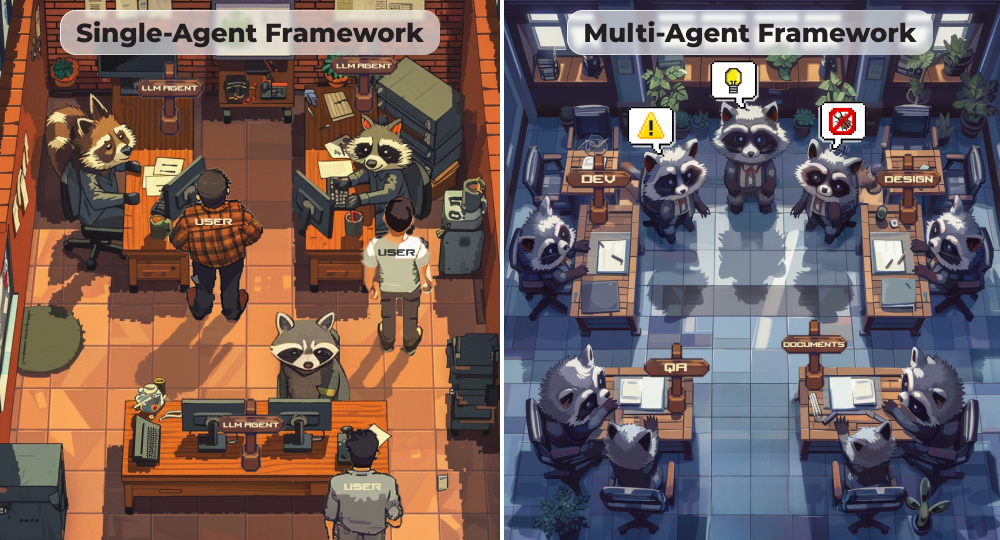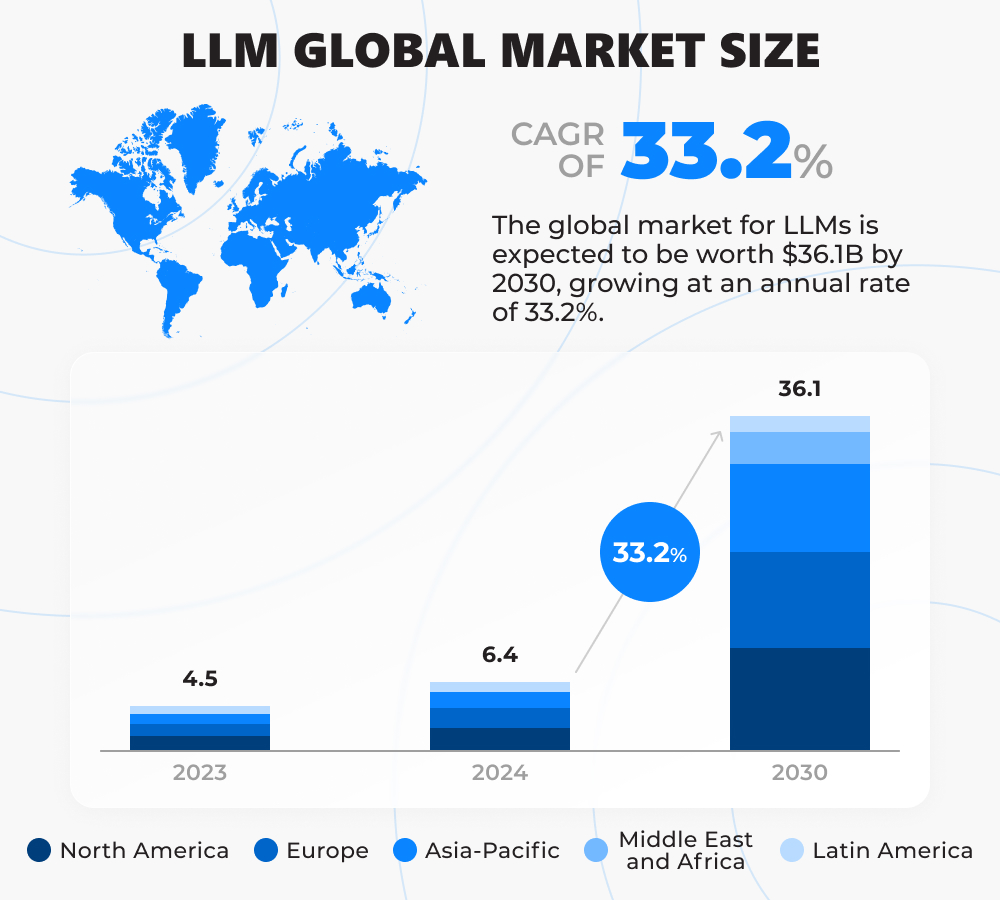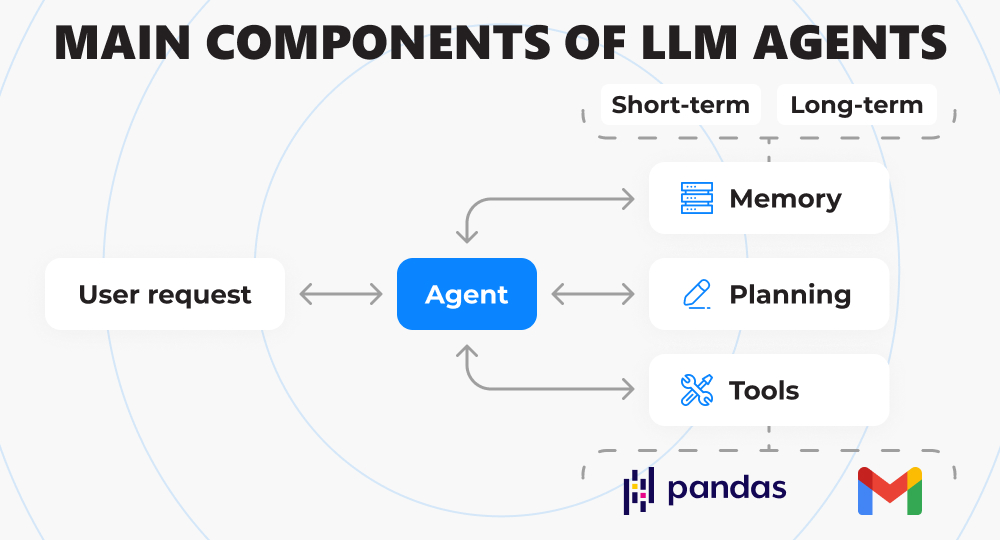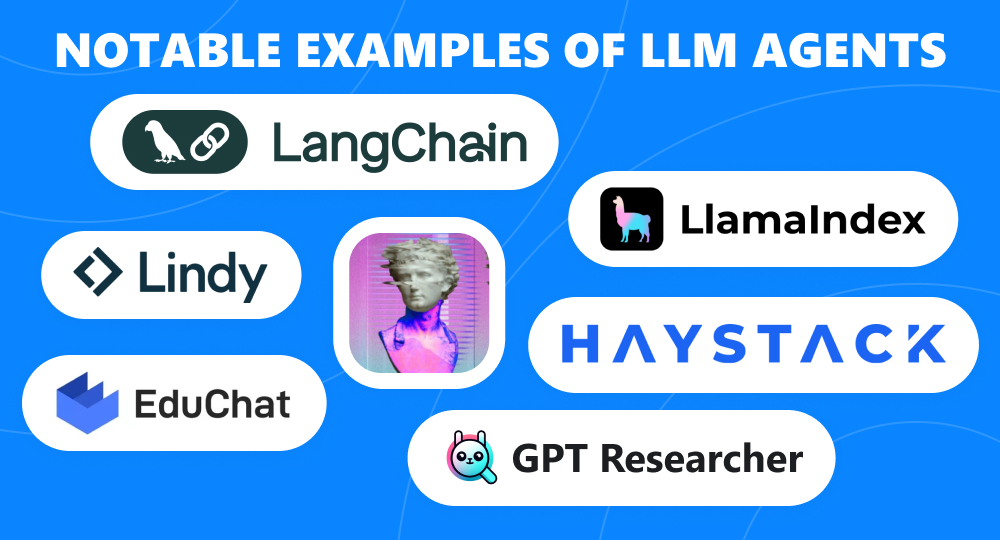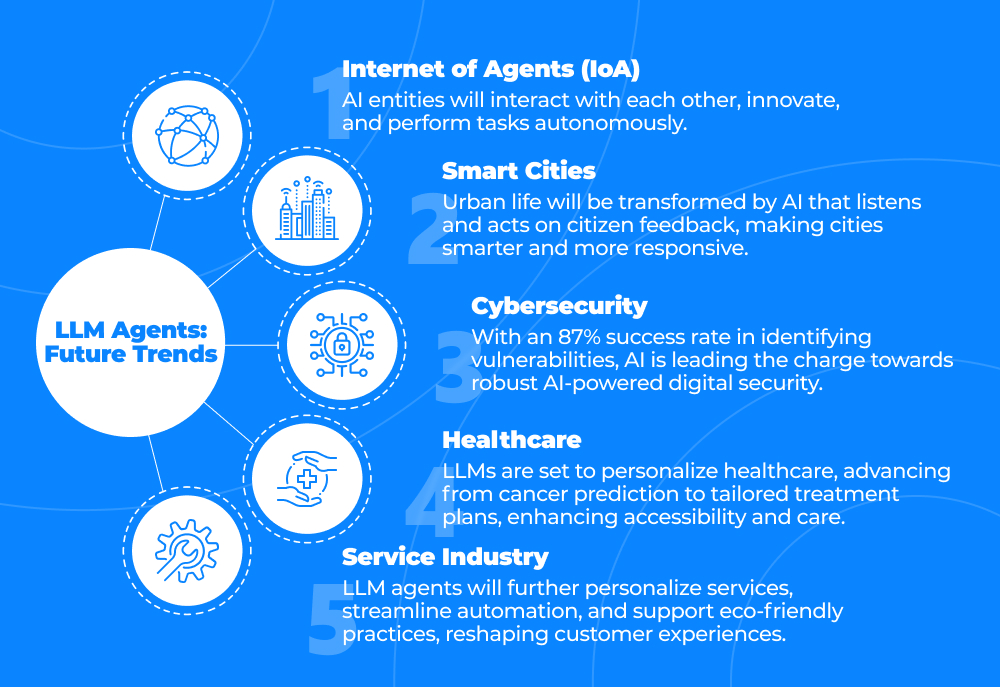Picture this: you're a product manager. Your current task is to diagnose what caused the product to fail last year. Getting the gist of the process is straightforward. Even to those with no product management background. Your mission? To explore the development lifecycle and track progress from MVP to marketing strategies. Then review usage conditions and reach a verdict. A lengthy venture, indeed. Yet, large language model (LLM) agents can simplify this challenge.
Discover what these agents are, understand the surrounding buzz, and learn how they can become your strategic asset. Let our investigation begin!
written by:
Alexey Sliborsky
Solution Architect
Picture this: you're a product manager. Your current task is to diagnose what caused the product to fail last year. Getting the gist of the process is straightforward. Even to those with no product management background. Your mission? To explore the development lifecycle and track progress from MVP to marketing strategies. Then review usage conditions and reach a verdict. A lengthy venture, indeed. Yet, large language model (LLM) agents can simplify this challenge.
Discover what these agents are, understand the surrounding buzz, and learn how they can become your strategic asset. Let our investigation begin!
Contents
What Are LLM Agents?
LLM agents are advanced AI constructs. They're built on transformer architecture and trained on large language models. The descriptor “large” in LLMs means their multi-billion parameter capacity. It grants agents the ability to understand and generate nuanced language patterns.
Such an LLM-powered agent interacts with users by delivering a suite of services:
- Answering questions;
- Generating relevant responses;
- Writing texts;
- Evaluating sentiment;
- Making recommendations.
Single-Agent vs. Multi-Agent LLM Frameworks
When you start working with LLMs, you should grasp the difference in their operational frameworks. Rather than technical choices, they are philosophies that represent distinct viewpoints. Using them, your current agent system can mimic, complement, or augment human cognitive processes.
- A single-agent framework, in which each agent operates independently to solve computer tasks. This model is great for linear, predictable tasks with clear parameters. For example, data analysis or report generation.
- Multi-agent framework. It allows multiple agents to combine expertise and tackle complex tasks that no single agent can handle alone. It's like an ensemble of experts, each bringing their unique domain expertise to the roundtable. Applications include:
- Real-time language translation at international conferences;
- Managing urban traffic flow;
- Coordinating disaster response strategies.
What Is So Good about LLM-Powered Autonomous Agents?
Today, the buzz around AI technologies like natural language processing and ML is intensifying. Yet, it’s the autonomous capabilities of large language model agents that are steering the AI narrative. Why have they garnered such attention?
Investment Potential
The LLM sector is witnessing steady growth. Industry analyses forecast a promising future for this technology. A study by MarketsAndMarkets indicates a significant increase in the market value: from $6.4B in 2024 to an impressive $36.1B by 2030. This translates to an extraordinary CAGR of 33.2% over the forecast period. What a huge potential for investment in AI agents, don't you think?
Seamless Entry into Any Domain
One of the key benefits of a pre-trained language model is its ability to manifest domain expertise. Particularly in cases that demand connection with external systems. LLMs allow for easy task switching, like chatting with bots or configuring APIs, without domain-specific programming. This adaptability cuts down on time and cost, enabling quick solution rollouts across industries.
We can describe an AI agent as the ultimate all-rounder. Today, it's an expert in business analysis, tomorrow it's calculating your Q2 revenue. Combined with a dedicated supervisor agent, they are almighty.
For instance, in HR departments, LLM agents can be valuable assistants in:
- Recruitment:
- Resume analysis;
- Candidate shortlisting using technical and social media insights;
- Report generation.
- Training:
- Needs assessment aligned with project demands and company standards;
- Employee progress tracking;
- Gathering feedback.
- Employee motivation and retention:
- Conducting satisfaction surveys;
- Identifying issues based on survey results and comments from platforms like Slack, Telegram, JIRA, and Confluence;
- Motivation analysis;
- Incentive program customization.
Ability to Combine Several Models
Large language model agents have the unique power to integrate several entities into a single system. This fusion allows them to access many data sources and adapt to different contexts for more accurate responses. While working on a task, the agent switches between pre-trained models, fine-tuning its own outputs to fit the specific issue. The result is a holistic understanding of linguistic subtleties, context, and domain-specialized knowledge.
Architecture: Main Components and Their Interplay
After exploring the surface, let's get to the heart of the LLM agent — its architecture.
Disclaimer:
This article describes the fundamental structure of an LLM agent, focusing on its key components. For an in-depth look at each element and their interactions, refer to this detailed blog post by Lilian Weng, Head of Security Systems at OpenAI.
As illustrated, a typical agent consists of four components.
1) Agent Core
The major element of an LLM agent — its “brain” — is the large language model. It acts as the central computational engine comprehending language through extensive data training. Its primary role? Managing the agent's internal logs, behavior, and logic.
The core computational engine analyzes prompts and performs critical reasoning, acting according to the agent's ability and goals. It guides the system to follow a sequence of actions, based on set rules and learned behaviors.
2) Planning Module
What do you usually do to solve a complex problem? The standard approach is to break it down into smaller, simple tasks and map out a workflow. AI agents follow a similar tactic through the planning module. This part lets LLM-based agents segment tasks into simpler steps and craft targeted strategies for each. It also helps them constantly update and adjust their plans to fit dynamic real-world scenarios.
The planning operation generally involves two critical phases:
- Plan formulation, in which the agent develops an initial strategy;
- Plan reflection, which involves revising and refining the plan as needed.
3) Memory Modules
Beyond the planning module, what equips autonomous agents to handle complex tasks? Memory modules. Basic agents can operate without them. Yet, most cases demand some level of memory retention.
Agents have it in two forms:
- Short-term memory. It acts as the agent's active thought process, enabling real-time responses. This type follows the conversation, helping the agent to grasp the immediate context and react accordingly. For how long? In prompt engineering terms, it's only the current dialogue.
- Long-term memory. This is a longer-term log of events between the agent and the user, stored in external memory. Consider it an extensive diary, keeping the details of previous interactions spanning weeks or even months. Apart from retaining data, its duties include:
- Understanding patterns;
- Learning from past mistakes;
- Using accumulated knowledge to inform future decisions.
4) Tools
These are external resources, services, or APIs. They extend the agent's abilities, ranging from elementary computations to deep data analysis. Each of the external tools has a specific purpose, and the AI system selects the appropriate one depending on the task's context and needs. This modular approach makes it easy to integrate new tools or upgrade existing ones. All while preserving the agent's stable performance.
Use Cases: LLM Agents across Industries
LLM agents seem like universal helpers for any industry. And they truly are. Here are a few use cases you may encounter these days.
Use Case
Description
AI Personal Assistant
This agent acts as a digital secretary. It manages daily activities, delivers timely information, and optimizes workflow. This resembles human help, but combined with the broad reach and precision of AI.
Conversational Agents
They engage users in natural, human-like dialogues. Such agents ensure smooth communication on many topics, starting with carefully crafted prompts.
Data Research and Analysis
Agents analyze large volumes of data to draw meaningful conclusions. They help humans tackle specific challenges many times quicker.
Healthcare
Here, agents assist by aiding with patient interaction and medical record keeping. They also serve as useful tools for early diagnosis and planning treatments. Still, this innovation supports, not replaces, the expertise of medical professionals.
Content Creation
In this context, LLM agents excel at producing a range of creative materials: from blog posts to technical documentation.
Task-Oriented Agents
Focused on specific tasks, LLM agents offer specialized aid and routine process automation. Task decomposition is their bread and butter.
Language Services
AI agents provide translation and localization services, facilitating communication across linguistic boundaries.
Educational Support
As virtual tutors, LLM agents enrich the educational experience. They generate clear explanations and grant access to a wealth of learning materials.
Technical Development
LLM agents assist with programming tasks, from code generation to debugging. Thus, they help optimize the entire software development lifecycle.
Compliance and Legal Aid
Smart assistants support legal research and document preparation. Yet, they're not a substitute for licensed legal practitioners.
Accessibility Enhancement
AI agents champion user inclusivity with features like speech-to-text conversion and reading support.
Notable Examples of LLM Agents
How do these use cases translate into practice? Here are some worthy examples:
- LangChain
An enterprise-grade framework designed for developing LLM-powered apps. It helps businesses integrate their private databases and APIs with LLMs. Plus, it enables the creation of context-aware agents with advanced reasoning skills. LangChain offers 100+ templates and 600+ integrations, supported by a vast community of 2.6K contributors. - LlamaIndex
A comprehensive framework for building LLM agents capable of automated reasoning and decision-making. Data loading and indexing, querying, and performance evaluation are its key features. - Lindy AI
It specializes in all-purpose AI assistants, “Lindies”, that execute tasks with everyday tools. They can take notes, find information, update and summarize content from various sources. Lindy AI is known for its no-code agent creation, security-first approach, and 3K integrations with the most popular apps. - Haystack
An open-source AI framework for building software with LLMs. It supports multimodal and conversational AI apps, advanced RAG pipelines, and NLP solutions. - Census GPT
Census GPT is designed for data analysis and processing, particularly in the context of census data. It can extract and analyze large datasets to provide insights for demographic studies. - EduChat
EduChat is an LLM-based chatbot system for smart education. It offers customized learning paths, YouTube video suggestions, and a smart program compiler in 60+ languages. - GPT Researcher
GPT Researcher is an autonomous agent for in-depth online research. It creates detailed and unbiased reports, focusing on relevant resources.
Wait, There Should be a Pitfall!
So many apps and so many opportunities. But along with new-age technologies come new-age challenges. Which ones, exactly, and how to tackle them?
Regulatory Control
As AI expands into more fields, industry-specific regulations must shape its use and growth. These guidelines will affect many areas. From healthcare, where patient confidentiality is paramount, to finance, where data security matters most. The goal is to balance innovation with public trust and safety.
What does this mean for businesses? Keeping up with regulatory shifts and adapting swiftly. In what ways?
- Proactively track regulatory developments;
- Invest in compliance;
- Foster a culture of responsible AI use.
Ethical and Privacy Issues
The integration of LLM agents into our lives raises crucial ethical concerns: bias, privacy, and transparency.
Complex problems like data and algorithm bias can skew an agent's responses. This can result in unfair or even discriminatory outcomes. The solution? Apply robust bias reduction protocols to guarantee AI fairness and equity.
Privacy is another cornerstone of ethical LLM use. Companies must safeguard user data with:
- Strict policies;
- Robust encryption;
- Transparent consent practices.
Developing comprehensive strategies to address these ethical challenges is not a compliance matter. It's a fundamental aspect of building trust with users. It underscores a commitment to responsible use of artificial intelligence.
Environmental Impact
Deploying LLMs poses grave environmental challenges: excessive energy consumption and associated carbon emissions. To mitigate this, businesses can:
- Optimize algorithm efficiency;
- Use renewable energy sources;
- Adopt low-carbon fuels for data centers;
- Organize sustainable hardware sourcing and recycling.
Such measures effectively address environmental concerns. Plus, they cater to the growing consumer demand for eco-friendly practices, offering an advantage in the market.
What to Expect from LLM Agents: a Tutorial for Future Users
Internet of Agents (IoA)
The emergence of human-to-machine apps signals a shift towards the Internet of Agents (IoA). This network of AI-to-AI interactions will transform human roles from evaluative to supervisory. Such AI entities will interact with each other, innovate, and perform tasks autonomously. As IoA integrates further into our social fabric, it promises to enrich human life.
Smart Cities
Although fully automated cities are still a dream, urban areas run by AI are a reachable goal. Since they can already process and interpret human words, who says they're not adapted for deep social listening? Like reading a tweet complaining about a pothole or processing a city-wide survey.
What else they're set to revolutionize:
- Personal mobility;
- Service delivery;
- Urban planning and design;
- Traffic management preventing congestion;
- IoT device integration, from street lighting to waste management;
- User-system interaction.
Cybersecurity
Research from the University of Illinois Urbana-Champaign reveals GPT-4 can effectively exploit vulnerabilities. With detailed descriptions, its success rate is 87%, but this drops to 7% without them. Yet, this preliminary success already sounds promising.
Looking ahead, we also expect:
- Automated threat modeling, identification, and neutralization;
- Growth in cybersecurity employment;
- AI replacing some cybersecurity roles;
- New legal ethics frameworks for AI.
Healthcare
From predicting cancer metastasis to aiding in diagnosis, LLMs are treading the healthcare sector. Clinical guidelines and calculators, agent-based simulations, hospital chatbots — all are set to transform the sector, making it more personalized and accessible. The future promises even greater innovation:
- Advanced predictive models for disease risk assessment;
- Integrated diagnosis and treatment via multi-agent environments;
- Faster drug discovery and development;
- AI predictions of drug effects;
- Medical error minimization through LLM benchmarking;
- Customized treatment plans considering genetics and lifestyle.
Service Industry
Integrating LLM agents in services fosters a more agile and customer-centric business atmosphere. In the future, they're set to:
- Tailor guest experiences to individual tastes;
- Offer smart conversational interfaces across the industry, from travel to gastronomy;
- Automate services end-to-end;
- Enhance delivery with intelligent routing and timing;
- Adapt swiftly to changing market demands and consumer expectations;
- Support sustainability through efficient resource management and waste reduction.
Key Takeaways
In evaluating LLM agents and their role in our human world, it's clear that they promise innovation in a wild range of tasks. They excel in strategic planning, information retrieval, and adaptive learning from past and contextual knowledge. This makes such innovation invaluable in scenarios requiring a nuanced approach. Despite this prowess, LLMs face challenges like limited agent's memory and the need for explicit guidance. Addressing these shortcomings is key to amplifying their skill.
Expanding upon this, ethical considerations are paramount when introducing LLM agents. As they integrate more into our lives, we must ensure they operate within moral standards: respect privacy and avoid bias.
Regulatory compliance is another critical aspect when developing LLMs. Laws and guidelines must evolve to guarantee the safe and responsible use of AI.
Plus, we must confront societal concerns surrounding AI:
- Job displacement;
- Transparency in decision-making;
- The risk of misuse.
By cultivating a trustworthy and responsible digital environment, we can use this intelligent technology for society's good while reducing associated risks.
Ready to build your custom LLM agent? Contact us today to step into a successful adventure with our expert guidance.

Contacts
Feel free to get in touch with us! Use this contact form for an ASAP response.
Call us at +44 151 528 8015
E-mail us at request@qulix.com



